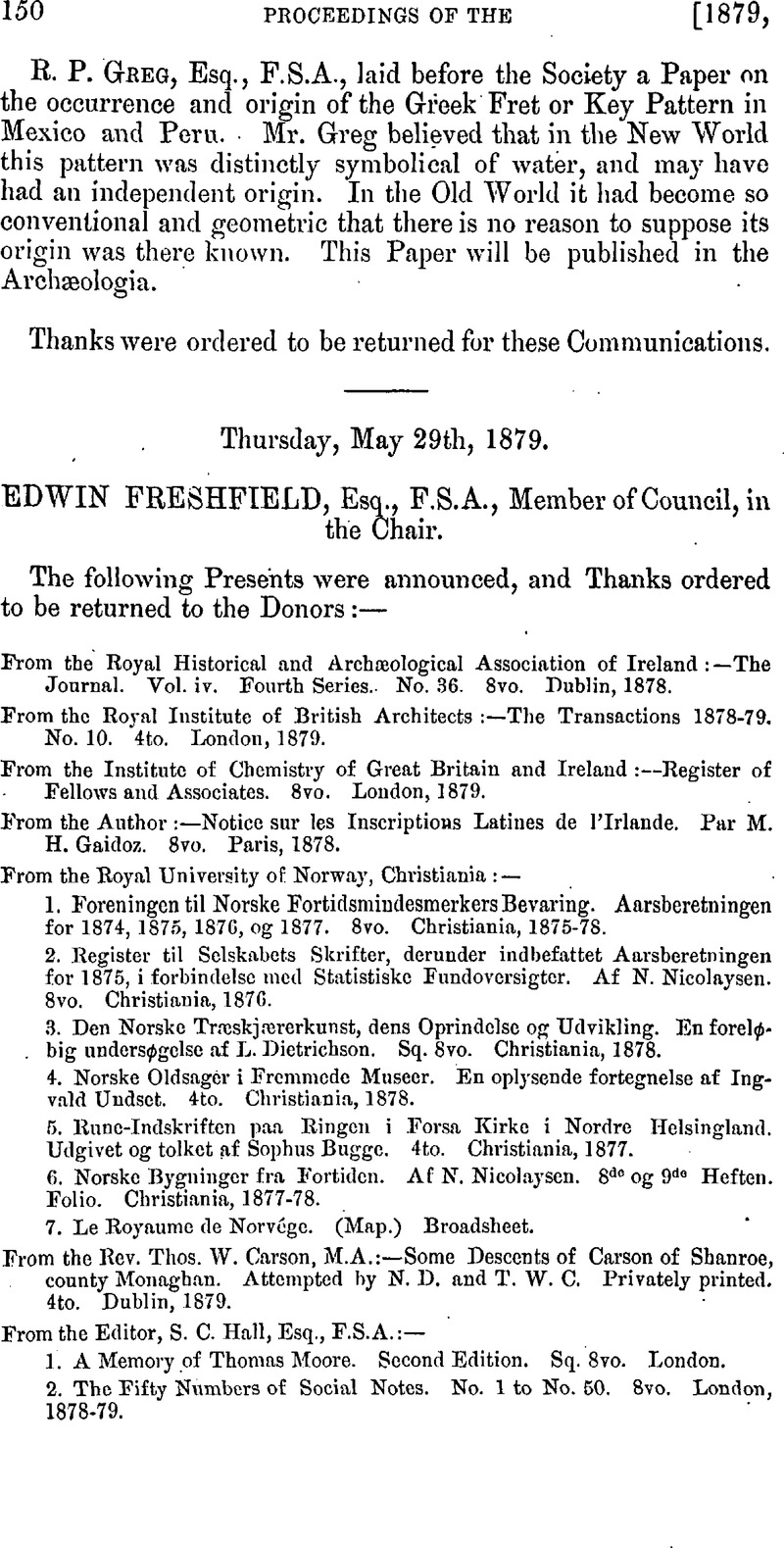No CrossRef data available.
Published online by Cambridge University Press: 10 May 2010

page 155 note * The chalice and paten have since been deposited in the British Museum.
page 155 note † From a copy of the Manuale (Rouen, 1555) in the possession of E. Freshfield, Esq., F.S.A. Fol. lxxxiii: v. Like directions, more or less minute, are found in the York and Hereford books.
page 156 note * Hero the priest is spoken of as returning ad dextrum cornu altaris, although a few lines before we find him already there engaged in washing his hands. In one case dextrum cornu altaris means literally the south corner of the altar. In the other it means generally the space south of the altar where the priest stood to wash his hands, water being ministered to him in the pelves. This was the custom at High Mass; at a private mass the priest seems to have washed at the sacrarium or piscina.
page 156 note † The earliest mention of it I have found is in the Consuctudines of the Cistercian order, the standard text of which appears to have beeu written in the last quarter of the twelfth century. In it we read Pinat ilium (se: ealicem) non reclinatum super altare juxta putenam. Similiter nee ad privatas Missas reelinetur. This prohibition seems to shew that the laying down of the chalice was then a new fashion, which the strictly conservative Cistercians refused to admit. I quote from Les monuments primitifs de la règie Cistercienne publiés d'après les manuscrits de l'abbaye de Citeaux par Ph. Guignard. Dijon, 1878. The greater part of this book is printed from a MS. formerly belonging to the abbey of Citeaux, and expressly written at the date above-mentioned to be the authoritative text of the service-books and laws of the order. This MS. seems to have been lost or neglected after the fifteenth century, and the texts printed in the Monasticon and elsewhere are from later copies. It is now in the public library at Dijon.
page 157 note * The custom of laying down the chalice held its ground for a long way into the Reformation, for in some Injunctions put forth in the third year of Edward VI. amongst other things forbidden is “the laying down and licking up the chalice of the Communion.” See Cardwcll Doc. Ann. xv. § 2.